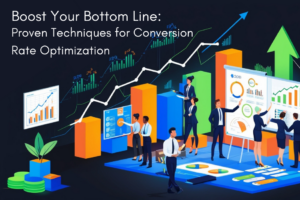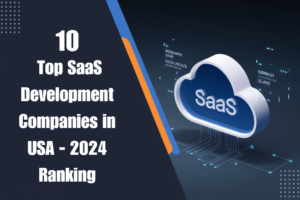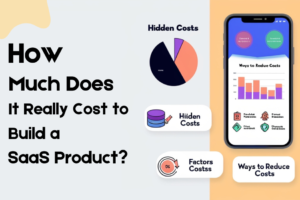13 Top Fintech Software Development Companies in USA (2024)

Table of ContentsToggle Table of ContentToggle
The software development industry is encountering huge development, with around 26.9 million software Developers around the world, and this number is supposed to increase to 28.7 million by 2024. In the US alone, there are almost 4.3 million software artificial intelligence developers. Most software development projects, around 84.7%, are centered around big business applications, while 53.6% depend on business digitization, and 38.5% are Internet business projects. Despite the difficulties presented by the pandemic, the IT area in a software development company in USA is projected to recover its pre-pandemic situation by 2024, with an expected CAGR) of 5%. The artificial intelligence in software development market is likewise expected to grow, arriving at a worth of $1039 million by 2027, with a CAGR of 22.54% from 2020 to 2027. Strangely, remote work has been shown to increment efficiency for around 54% of programmers. Looking forward, the quantity of software developers is projected to keep rising, coming to 27.7 million in 2023 and 28.7 million in 2024. The expense of software development ventures can shift essentially, going from $3,000 to $150,000, with the development of a Client Relationship The executives (CRM) framework costing around $100,000 in 2023. Besides, the work of AI software development in the US is supposed to develop by 22% by 2029. Complex software development activities can cause expenses of up to $1 million. As far as software dialects, JavaScript holds the best position with 49.47% utilization around the world. Ultimately, the middle yearly compensation for software developers in the US is $110,140. The software development landscape is evolving rapidly, characterized by shorter development cycles, higher complexity, and the need for more efficient solutions. This article explores the pivotal role of Artificial Intelligence (AI) in revolutionizing the AI software development process and addresses its impact on the industry’s future.
Figuring out the Job of Computerized Reasoning in Software Development Company
Artificial intelligence has arisen as a groundbreaking power in the field of software development, generally modifying how software is planned, constructed, and kept up with AI software development company. Artificial intelligence, an innovation that reproduces human knowledge, has turned into a basic part of present-day software projects, driving development and softwareivity. Understanding its job in software development is fundamental for saddle its potential completely. Custom software development services envelops different viewpoints, like code age, bug identification, testing robotization, and client experience upgrade. Developers are currently utilizing artificial intelligence to smooth out work processes, settle on better choices, and present elements that were once thought to be advanced.
Investigating the Convergence of Artificial intelligence and software Development
The Groundbreaking Force of Artificial Intelligence in Current Software Projects
Artificial intelligence’s extraordinary power is obvious in its capacity to speed up development, enhance asset use, and further develop Digital Transformation Services. Artificial intelligence-driven highlights like auto-consummation, code ideas, and mistake identification are shortening development cycles. Developers can fabricate strong applications all the more rapidly, giving an upper hand in a speedy industry. The effect of Artificial intelligence reaches out from past development to regions like testing and troubleshooting. Computerized testing fueled by artificial intelligence recognizes weaknesses and execution issues, guaranteeing solid software. Continuous bug recognition saves time and assets, improving software quality. Besides, Artificial intelligence is driving client-driven encounters. By examining client conduct and inclinations, Artificial intelligence suggests content, tailors interfaces, and works on general ease of use. The joining of Artificial intelligence enhances software, making it more intelligent and locking in. All in all, Artificial intelligence’s part in present-day software projects is groundbreaking, impacting each period of development. As developers keep on outfitting the force of artificial intelligence, the software will turn out to be more software, easy to understand, and secure. The crossing point of human creativity and machine knowledge is driving the software development industry into another period of development and development. Embracing Artificial intelligence isn’t simply a choice but a need for software developers hoping to remain serious and meet the steadily developing necessities of clients and organizations.
Practical Applications of Artificial Intelligence in Software Development
Artificial intelligence is transforming software development with reasonable applications that improve softwareivity and development across different periods of the development life cycle. The following are nine useful utilizations of Artificial intelligence in software development:
1. Robotized Code Generation:
Artificial intelligence-based code generators can naturally create code pieces, saving developers time and decreasing the probability of mistakes.
2. Code Audit and Optimization:
Artificial intelligence tools can examine code for likely bugs, weaknesses, and shortcomings, assisting Developers with further developing code quality and execution.
3. Prescient Analytics:
An artificial intelligence-driven prescient analysis can aid necessities gathering, asset assignment, and project arranging, helping Developers in pursuing information-driven choices. 4. Mechanized Testing: Artificial intelligence-fueled testing tools mechanize the most common way of testing software, recognizing bugs, and execution issues, and guaranteeing the unwavering quality of uses.
5. Natural Language Processing (NLP):
NLP is utilized to make conversational connection points, chatbots, and voice associates that improve client cooperation and commitment.
6. Suggestion Systems:
Artificial intelligence-based proposal motors examine client information to give customized content, further developing the client experience and expanding client commitment.
7. AI for Client Conduct Analysis:
Artificial intelligence models examine client conduct to distinguish examples, inconsistencies, and patterns, assisting Developers with pursuing information-driven choices for item upgrades.
8. Bug Location and Debugging:
Artificial intelligence can consequently distinguish and focus on bugs in the code, facilitating the troubleshooting system and diminishing development time.
9. Information Security:
Artificial intelligence-driven solutions improve information security through cutting-edge danger discovery, irregularity investigation, and ongoing observing, safeguarding software and client information against digital dangers. These pragmatic utilizations of Artificial intelligence are changing the software development process, making it more effective, client-driven, and secure. Developers are progressively utilizing artificial intelligence to improve work processes and upgrade the nature of software, guaranteeing that applications meet the advancing necessities of clients and organizations.
How to Leverage AI for Streamlined Software Development Workflows?
AI-powered tools assist in automating various tasks, such as code generation, code review, and bug detection. By doing so, they reduce development time and improve code quality. Developers can focus on more complex, creative aspects of coding. Utilizing Artificial brainpower (Artificial intelligence) for smoothed-out software development work processes can fundamentally further develop proficiency and efficiency. Here are moves toward really outfit artificial intelligence in your software development process:
1. Recognize Work Process Challenges:
Begin by recognizing regions in your software development work process where artificial intelligence can have an effect. Normal difficulties incorporate tedious errands, manual code surveys, redundant testing, and asset distribution.
2. Select the Right Artificial Intelligence Tools:
Pick Artificial intelligence tools and platforms that line up with your particular requirements. There are artificial intelligence-controlled instruments for code age, robotized testing, and code audit, and that’s only the tip of the iceberg. Consider factors like simplicity of combination, similarity with your current tech stack, and versatility.
3. Computerize Dreary Tasks:
Use Artificial intelligence to robotize dull assignments that consume time and assets. For instance, artificial intelligence can consequently produce code pieces, diminishing manual coding endeavors and speeding up development.
4. Code Audit and Optimization:
Carry out Artificial intelligence-based code audit tools that examine code for bugs, weaknesses, and execution issues. This assists in improving coding quality and guarantees that accepted procedures are followed.
5. Prescient Analytics:
Influence Artificial intelligence-driven prescient examination to conjecture asset necessities, distinguish possible bottlenecks, and allot assets proficiently. This information-driven approach improves project arranging and asset management.
6. Robotize Testing:
Utilize Artificial intelligence testing answers for robotized testing techniques, including unit testing, incorporation testing, and relapse testing. Artificial intelligence can distinguish and focus on bugs, empowering speedier bug location and goal.
7. Client Conduct Analysis:
Use artificial intelligence to examine client conduct and inclinations, assisting you with understanding client needs and designing software highlights appropriately. This personalization improves the client experience and lifts commitment.
8. CI/CD:
Carry out artificial intelligence in CI/Disc pipelines to mechanize code coordination, testing, and organization. Artificial intelligence can distinguish gives from the get-go in the development cycle and speed up the delivery cycle.
9. Debugging:
Artificial intelligence can consequently recognize and focus on bugs in your codebase. This smoothes out the troubleshooting system, saving time and assets.
10. Information Security:
Improve information security by involving artificial intelligence-driven answers for continuous danger location and abnormality examination. Artificial intelligence safeguards software and client information against digital dangers.
11. Monitor and Adapt:
Constantly screen the presentation of Artificial intelligence-controlled tools and adjust your work processes in light of experiences and client criticism. Routinely update and calibrate Artificial intelligence algorithms for ideal outcomes.
12. Train Your Team:
Guarantee that your development group is knowledgeable in using Artificial intelligence tools. Give preparation and assets to boost the advantages of Artificial intelligence in your work processes. By decisively incorporating artificial intelligence into your software development work processes, you can smooth out processes, diminish mistakes, further develop software quality, and speed up development cycles. Artificial intelligence-driven solutions support softwareivity as well as upgrade the client experience, making them a significant resource for current software development groups.
Can AI-Driven Features Enhance the User Experience?
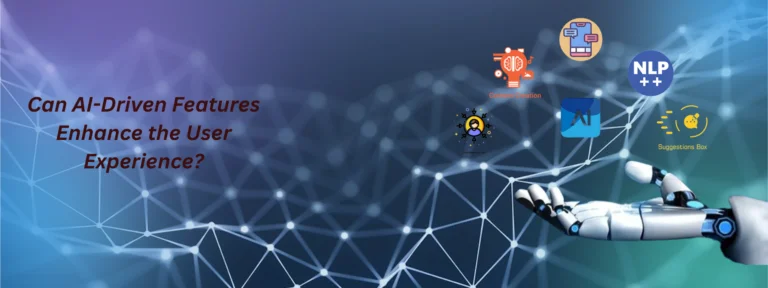
Absolutely, artificial intelligence-driven features significantly affect upgrading the client experience in software applications. This is the way Artificial intelligence further develops client encounters:
1. Personalization:
Artificial intelligence investigates client conduct and inclinations to give customized content and suggestions. This outcome is additionally significant and connects with encounters for every client.
2. Conversational Interfaces:
Artificial intelligence-fueled chatbots and voice aides give regular, ongoing communications, making it simpler for clients to get data and help.
3. Suggestion Systems:
Artificial intelligence-driven proposal motors recommend items, services, or content in light of a client’s previous collaborations, expanding client commitment and supporting deals and client maintenance.
4. Natural Language Processing (NLP):
NLP permits software to comprehend and answer human language, making points of interaction more easy to understand and open.
5. Content Generation:
Artificial intelligence can naturally make content, for example, news stories or item portrayals, giving clients cutting-edge data and decreasing the requirement for manual substance creation.
6. Prescient Composing and Auto-Completion:
Artificial intelligence predicts client input, diminishing composing exertion and limiting blunders.
7. Help in Choice Making:
Artificial intelligence can give information-driven suggestions, supporting clients in going with informed choices. For instance, it can propose the best travel courses, eateries, or items to purchase.
8. Improved Search:
Artificial intelligence-controlled web search tools comprehend client inquiries all the more precisely and give more pertinent outcomes, further developing the hunt insight.
9. Prescient Analytics:
Artificial intelligence can foresee client needs and recommend activities before clients even solicitate them, making software more instinctive and effective.
10. Accessibility:
Artificial intelligence can further develop availability for clients with incapacities by giving text-to-discourse, discourse-to-message, and other assistive innovations.
11. Quality Assurance:
Artificial intelligence can distinguish and address mistakes continuously, guaranteeing a smoother and blunder-free client experience.
12. Virtual Assistants:
Artificial intelligence menial helpers guide clients through processes, answer questions, and perform errands, making software more client-driven. In outline, artificial intelligence-driven highlights upgrade the client experience by giving customized, natural, and effective connections. Whether it’s through customized proposals, normal language understanding, or prescient investigation, Artificial intelligence services fundamentally further develops how clients collaborate with and benefit from software applications, prompting higher client fulfillment and commitment.
How to Select the Right AI Tools and Frameworks for Software Development?
Strengthening Data Security with AI-Driven Solutions in Software Development
Reinforcing information security with Artificial intelligence-driven solutions is significant in the present software development scene. The following are seven compelling means to accomplish upgraded information security:
1. Peculiarity Detection:
Execute Artificial intelligence algorithms that constantly screen information designs and identify irregularities or surprising ways of behaving, for example, unapproved access or information breaks. Artificial intelligence can quickly recognize possible dangers and answer continuously to moderate dangers.
2. Conduct Analysis:
Use artificial intelligence to break down client conduct, both inside the application and across the organization. Artificial intelligence can recognize deviations from typical ways of behaving and trigger alarms when it identifies dubious exercises.
3. Prescient Security:
Artificial intelligence can figure out potential security dangers by investigating authentic information and patterns. This empowers proactive measures to be taken before a security break happens.
4. Constant Monitoring:
Artificial intelligence-driven solutions give continuous checking of organization and application traffic, empowering the prompt distinguishing proof of dangers and weaknesses, forestalling potential information breaks.
5. Validation and Authorization:
Artificial intelligence reinforces client confirmation and approval processes by utilizing multifaceted verification, biometrics, and examination to guarantee secure admittance to delicate information.
6. Information Encryption:
Execute Artificial intelligence for powerful encryption and decoding of information very still and on the way, defending information from unapproved access. Artificial intelligence can oversee encryption keys safely, lessening weaknesses.
7. Episode Response:
Artificial intelligence-driven occurrence reaction frameworks can consequently isolate compromised frameworks, recognize the degree of a break, and prescribe activities to contain and recuperate from security episodes, limiting possible harm. By coordinating Artificial intelligence-driven information security solutions, software development groups can invigorate information assurance gauges and answer successfully to developing network safety dangers, guaranteeing the respectability and secrecy of delicate data.
Challenges and Considerations When Implementing AI in Software Development
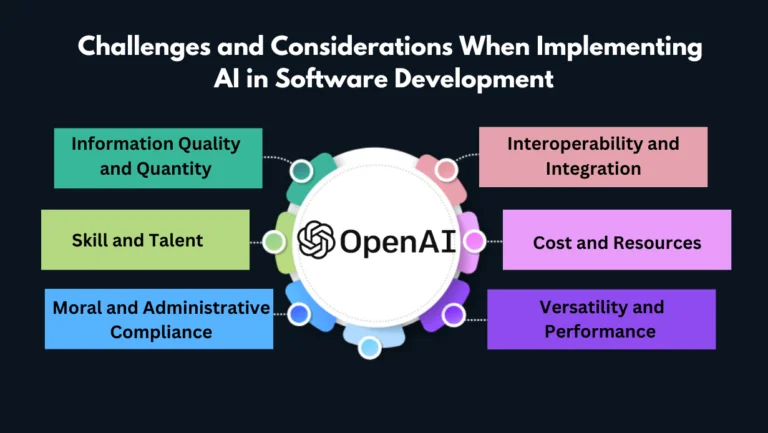
Incorporating Artificial intelligence into software development presents different difficulties and contemplations that ought to be addressed to guarantee fruitful execution. The following are six critical difficulties and contemplations:
1. Information Quality and Quantity:
Artificial intelligence algorithms require significant information to successfully perform. Guaranteeing admittance to perfect, important, and different informational collections can be a critical test. Information assortment, marking, and curation processes should be thorough to prepare Artificial intelligence models precisely.
2. Skill and Talent:
Building Artificial intelligence solutions requires aptitude in AI and information science. Recruiting or upskilling a group with the necessary abilities can be testing and costly. Developers and information researchers ought to be capable of Artificial intelligence tools, systems, and best practices.
3. Moral and Administrative Compliance:
Artificial intelligence can present moral predicaments, particularly in protection and predisposition. developers need to think about moral ramifications in information assortment, use, and algorithmic direction. Consistency with information insurance guidelines, such as GDPR, is urgent.
4. Interoperability and Integration:
Coordinating artificial intelligence solutions into existing software can be intricate. Similarity with current tech stacks, information bases, and APIs ought to be painstakingly thought of. Furthermore, Artificial intelligence frameworks might have to work consistently with different parts of the software biological system.
5. Cost and Resources:
Creating and keeping up with artificial intelligence models can be an asset serious. Expenses can rise quickly, and there ought to be a reasonable procedure for planning and asset designation. Cloud-based Artificial intelligence services can assist with alleviating framework costs.
6. Versatility and Performance:
Artificial intelligence models might have to scale to oblige developing information and client requests. Guaranteeing that Artificial intelligence frameworks keep up with execution and responsiveness as they extend is critical for a positive client experience. Tending to these difficulties and contemplations in the preparation and execution periods of Artificial intelligence coordination is fundamental for effective execution in software development. Cautious information the executives, moral mindfulness, ability securing, and planning are key variables in beating these obstructions and understanding the advantages of Artificial intelligence in software projects.
Real-World Examples of Successful AI Integration in Software Development Company
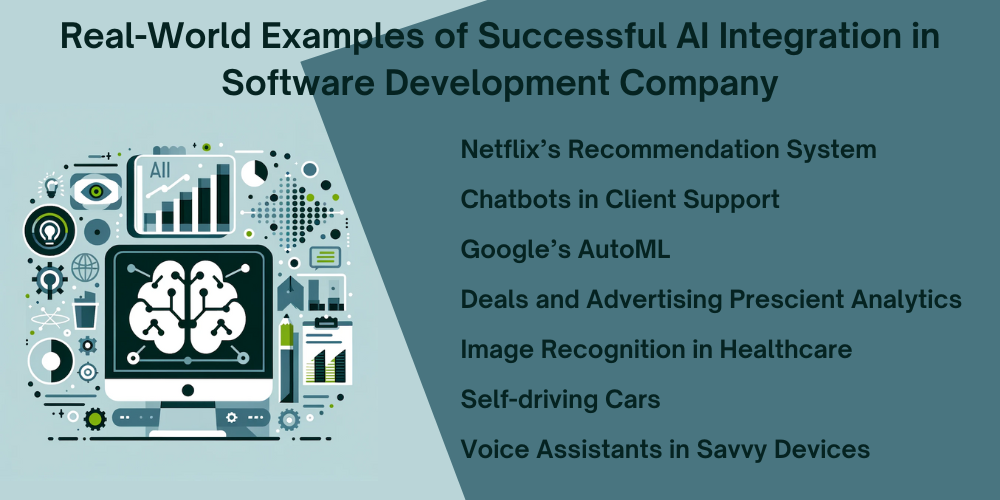
Genuine instances of fruitful Artificial intelligence joining in software development grandstand the groundbreaking capability of Artificial brainpower across different businesses. The following are seven such models:
1. Netflix’s Recommendation System:
Netflix’s Artificial intelligence-driven proposal motor breaks down client-seeing propensities and inclinations to recommend customized content, improving the client experience and supporting watcher commitment.
2. Chatbots in Client Support:
Organizations like IBM and Salesforce have coordinated artificial intelligence-fueled chatbots into their client care software. These chatbots help clients with inquiries, give quick reactions, and let loose human specialists for additional mind-boggling issues.
3. Google’s AutoML:
Google’s AutoML utilizes artificial intelligence to mechanize AI model creation, making it available to Developers with insignificant ML aptitude. This smoothes out the development of Artificial intelligence-driven applications.
4. Deals and Advertising Prescient Analytics:
Numerous organizations use Artificial intelligence-driven prescient investigation for lead scoring, gauging deals, and upgrading showcasing efforts. This outcome in additional software deals and showcasing methodologies.
5. Image Recognition in Healthcare:
Artificial intelligence-driven picture acknowledgment software, for example, IBM Watson for Medical care, assists radiologists and specialists with interpreting clinical pictures, prompting quicker and more precise findings.
6. Self-driving Cars:
Organizations like Tesla and Waymo are coordinating artificial intelligence and AI into their self-driving vehicle software. Artificial intelligence algorithms process information from sensors to explore and settle on continuous driving choices.
7. Voice Assistants in Savvy Devices:
Amazon’s Alexa, Apple’s Siri, and Google’s Right hand are artificial intelligence-driven voice associates coordinated into brilliant gadgets. They answer voice orders and perform assignments, upgrading the client experience. These genuine models feature the flexibility and effect of Artificial intelligence in software development, from customizing content and mechanizing complex assignments to further developing medical services and reclassifying transportation. Artificial intelligence joining keeps on driving development and effectiveness across different businesses, making it a basic part of current software development.
Conclusion
About Author

Written By Darshan Saroya
Darshan Saroya is the creator and CEO of the content development company. He writes and has over 7 years of experience as a content marketer, for technoprofiles.com generating on blogging , article's and and website technique.

